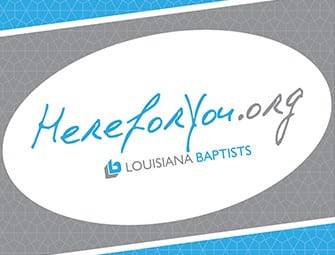More and more churches are embracing the Internet, launching Web sites to reach
people in a technological age.
More and more churches are embracing the Internet, launching Web sites to reach
people in a technological age.
Unfortunately, too few are reaching their potential because
church leaders do not define why they want a site or fail to develop a strategy
for what they hope to accomplish, an Internet specialist insists.
Indeed, too many church leaders are enamored by the gee-whiz
technology of the Internet but are not considering how to link their Web sites
to their overall communications strategy, specialists explain.
“A lot of people just put up something because, Oh, I have to have
a website. But it doesnt meet any needs,” said Lisa McMahon,
senior Web administrator at the Southern Baptist International Mission Board
and a consultant for Web design for the past five years.
“Some churches have not thought through their strategy,”
agreed Robert Reeves, communications director for the Kentucky Baptist Convention,.
Church Web sites often are developed, launched and maintained
by just one person, Reeves noted. “It tends to be their vision instead
of a really thought-out vision that involves multiple people at the church and
involves leadership,” he said. “Once the fun wears out, thats
the point to where a Web site begins to get stale.”
Many churches simply are hosting a “billboard” site,
advertising their location or church service times, said Steve Hewitt, editor
of Christian Computing Magazine.
“Theyre totally missing the potential of what can
be done,” he stressed. “We say that there are like 50,000 churches
on the Web and 49,995 are doing it wrong.”
A church Web site can be incredibly complex, including recordings
of church services, chat rooms for Bible studies or multimedia presentations
explaining the Christian faith to nonbelievers. It also can be as simple as
a page that lists a churchs worship schedule and phone number.
The key is planning, specialists agree.
Rather than being distracted by all the possibilities posed
by the Internet, Dave Stahl recommended that churches design their Web site
to match their mission statement. “I always encourage churches to forget
about tools,” said Stahl, communications director for Willow Creek Community
Church in South Barrington, Ill. “Do your strategy, because tools are going
to change, and you dont want your strategy to change over time.”
Another common pitfall is trying to do too much too soon, added
Ryan Bradley, Web manager for Beuchel Park Baptist Church in Louisville, Ky.
“Start small, then slowly build,” he cautioned.
McMahon suggested most church Web sites should be classified
by one of two goals – helping keep members informed or advertising to people
outside the church.
Web sites targeting church members will require more constant
updates for such services as membership directories or online newsletters, she
said.
McMahon also recommended that Web designers for such sites
make sure they are offering information and services that church members truly
want. “Whats the user expecting to find?” she asked.
Web managers should monitor the traffic to their sites to see
if their work is being valued, McMahon added. “If you put up the church
newsletter and no one ever goes there, youre wasting your time.”
On the other hand, churches that use Web sites for outreach
are going to want to avoid “churchy” language that might confuse non-Christians,
McMahon noted.
“People are used to being entertained,” she added. “You might
have to have more of the cutting-edge technology.” (ABP)
Lisa McMahon insists she can improve most church Web sites
by asking two questions.
Who is the target audience?
What is the goal for the site?
“If they dont know who their primary audience
is, they really dont know what their purpose is,” said McMahon,
who serves as Web manager for the Southern Baptist International Mission Board.
That might sound basic, but surprisingly few churches have
thought through those simple questions, McMahon noted.
In addition to audience and goals, there are other questions
McMahon said churches also must answer.
These include:
Who is the secondary audience?
How will the site serve the primary audience?
What type of information will the primary
audience expect to find on the Web site?
What information is readily available
to provide to the Web site audience?
What types of information are expected
to be placed on the church Web site? Calendar? Newsletters? Staff profiles?
Who will serve as the Web manager for
the site? The Web manager is the primary contact person for a site, McMahon
explained. That person also monitors access privileges to the Web site account
for page editing purposes.
Who will be the maintainers for the site?
Page maintainers can be the Web manager or someone else, McMahon explained.
Page maintainers perform many of the technical duties, such as actually building
the Web pages within the site, converting content to Web format and making
updates to the pages.
How often is content expected to be updated
on the site?
How much time per week or per month is
scheduled to be dedicated to updating the site?
Who will be responsible for answering
e-mail that comes via a link on each page of the Web site?
What words are hoped to describe the
Web site once it is built and operational? Professional? Friendly? Cutting
edge?
What materials are on hand that one would
like to adapt and publish on the Web?
Is the preferred domain name available?
What will the Web site address be if the preferred address already is taken?
Has a Web-hosting provider for the site
been chosen?
What look and feel is desired for the
Web site? For those starting out, McMahon recommended they have a list of
at least five favorite sites so they can tell a designer what they liked about
each one. (BP)



